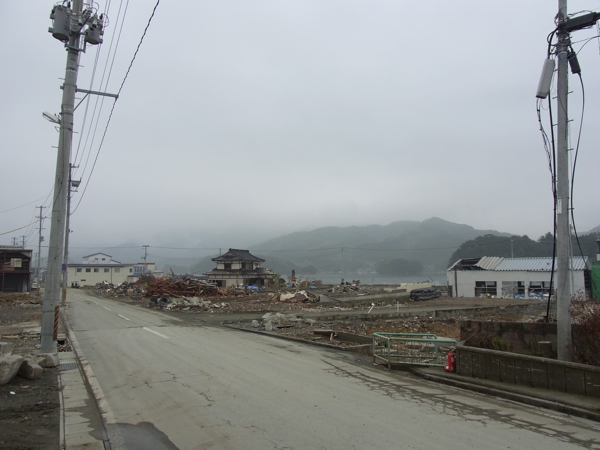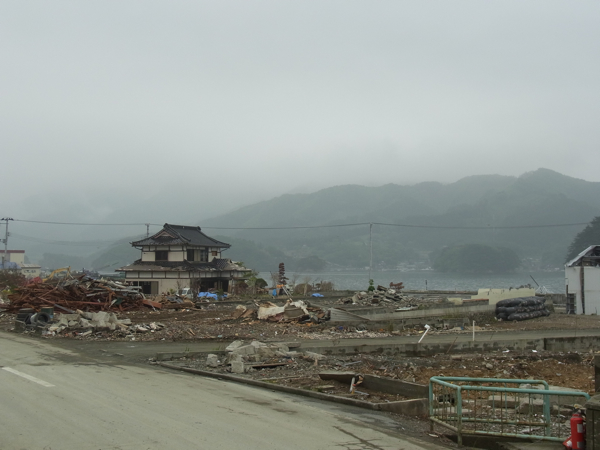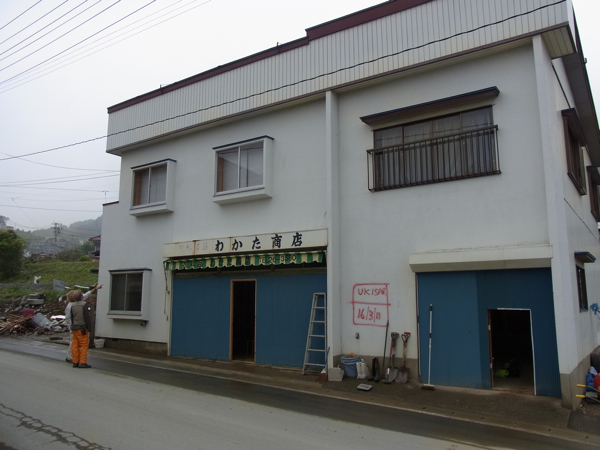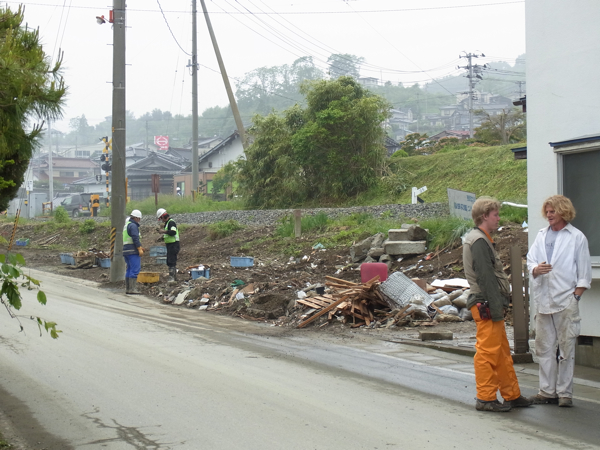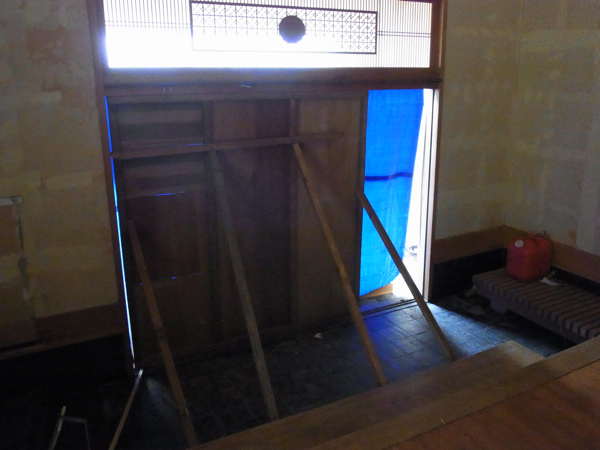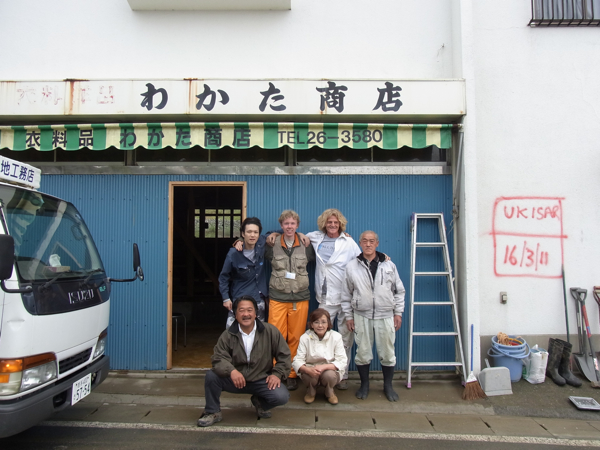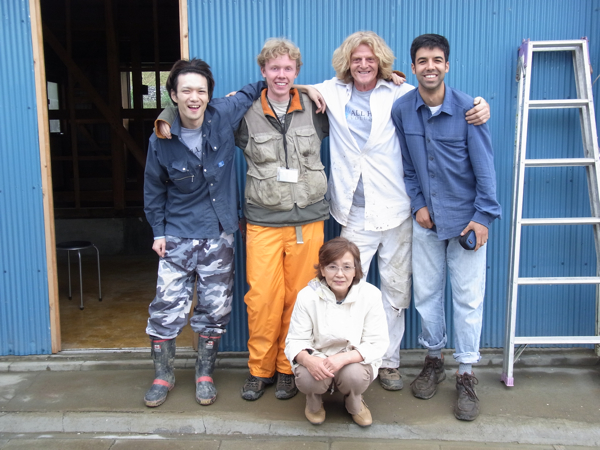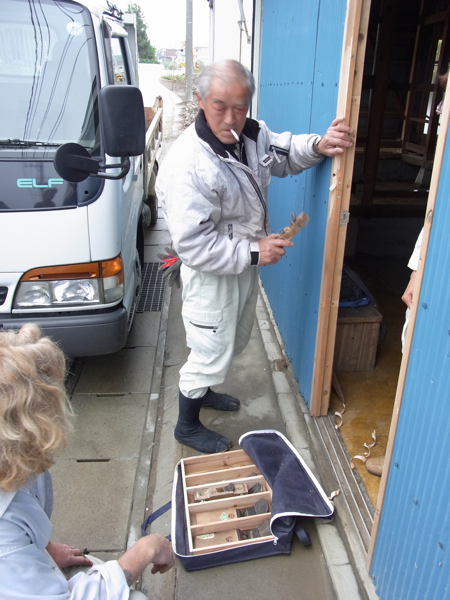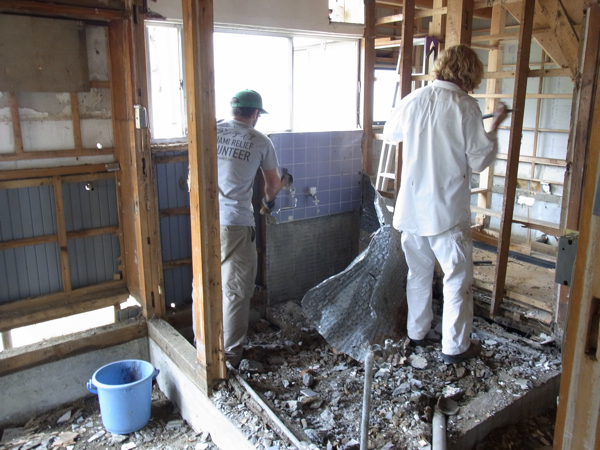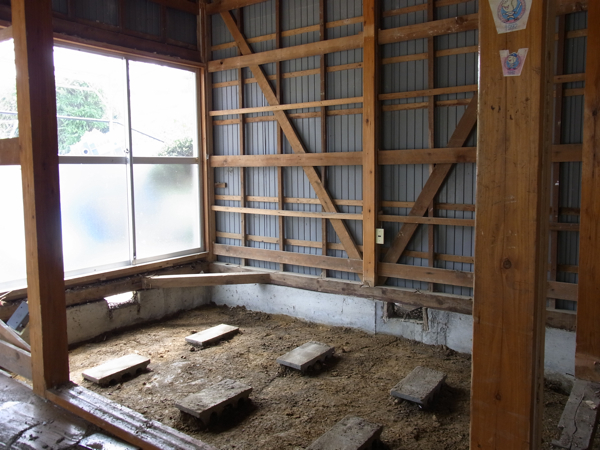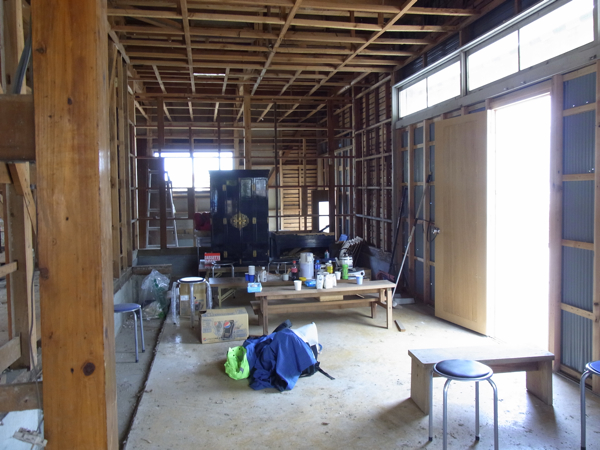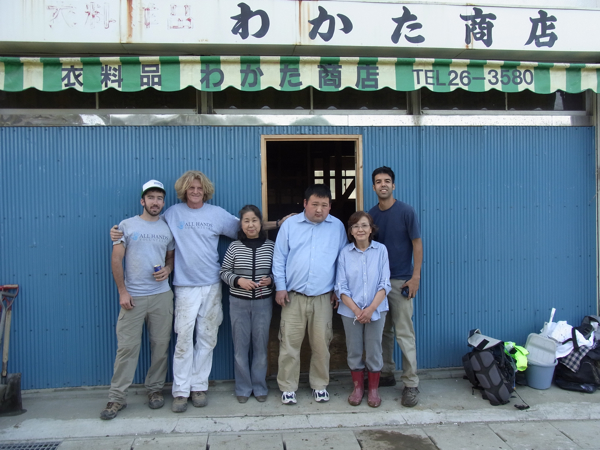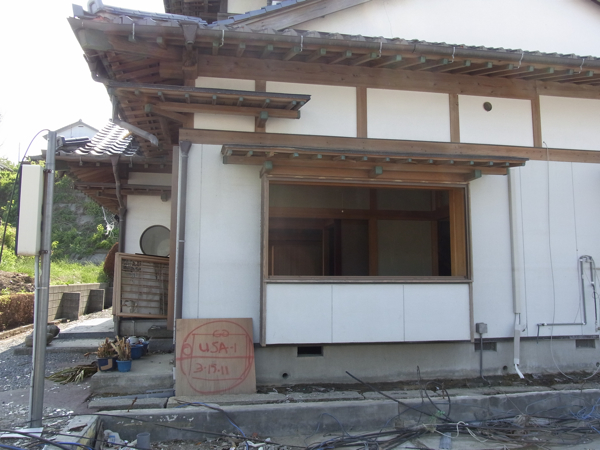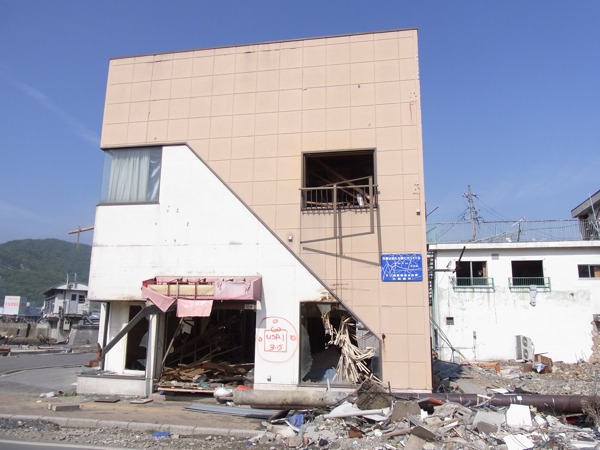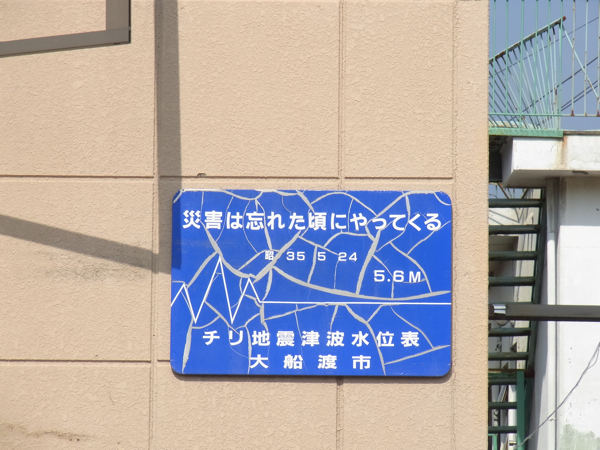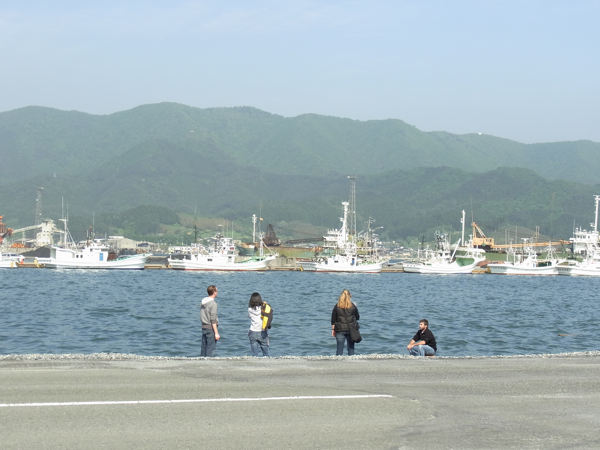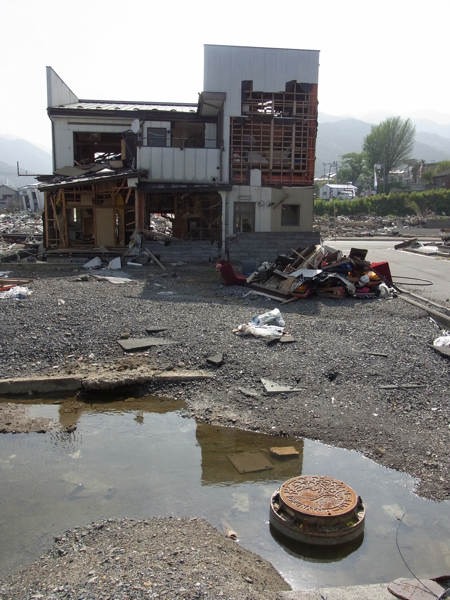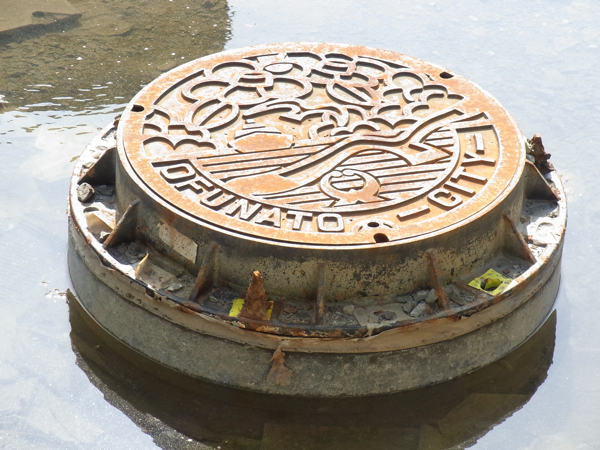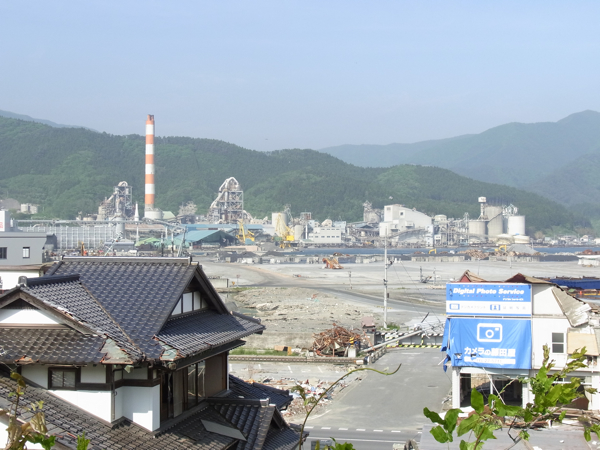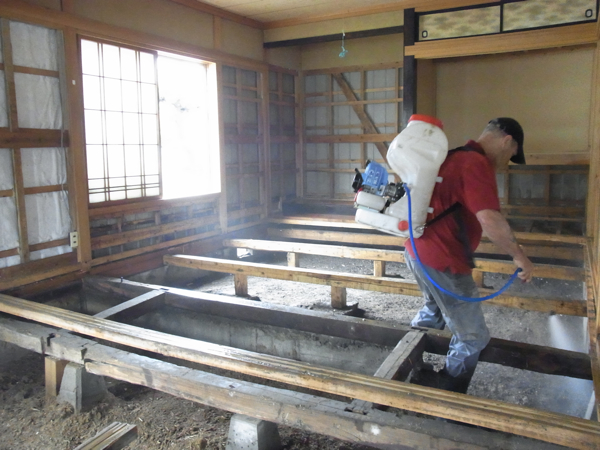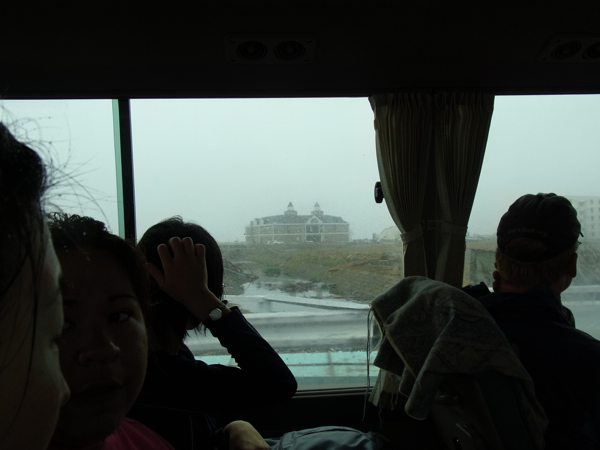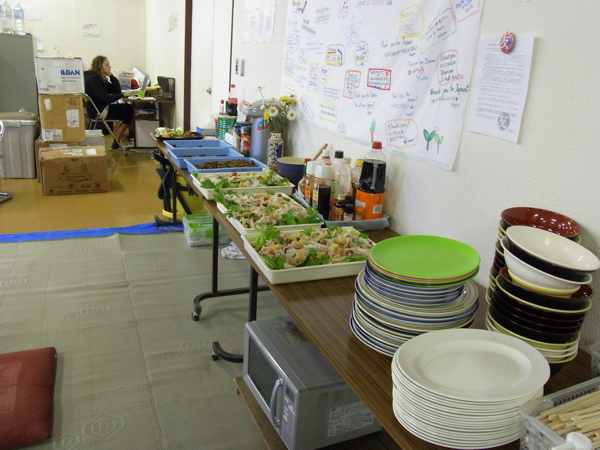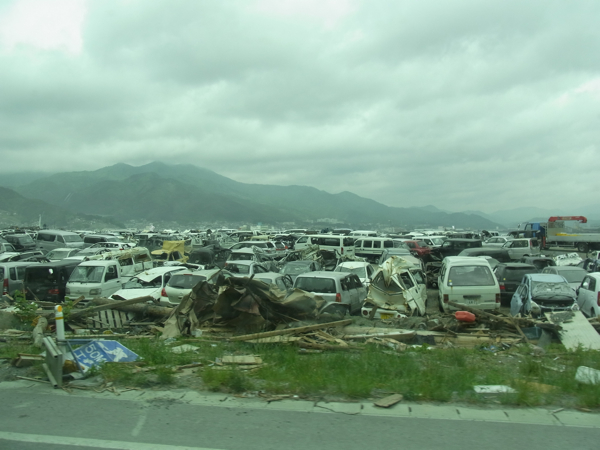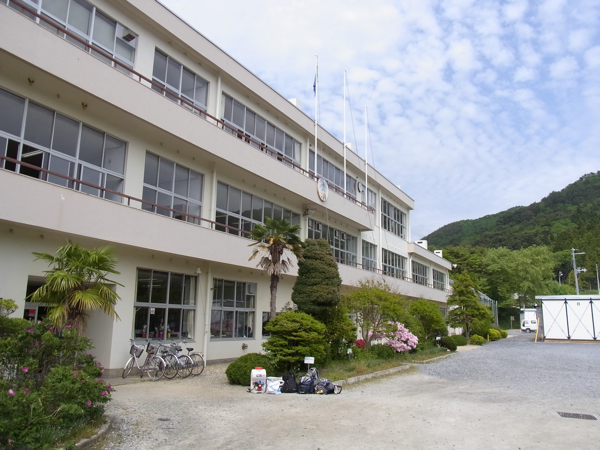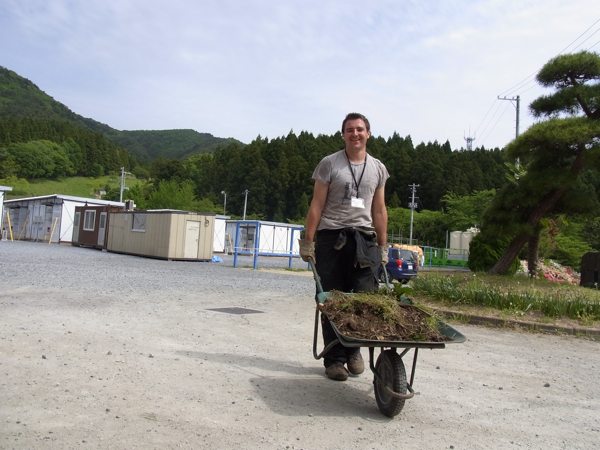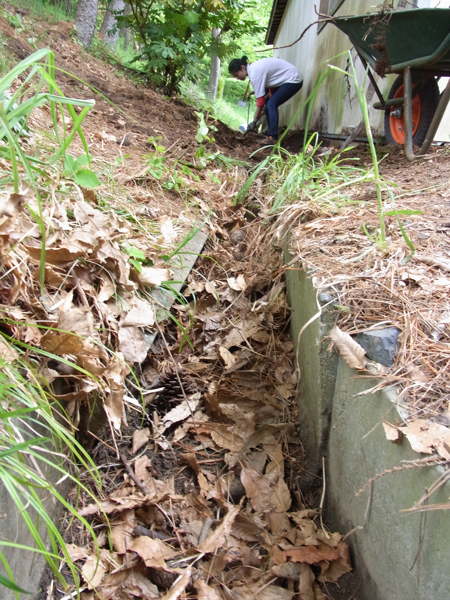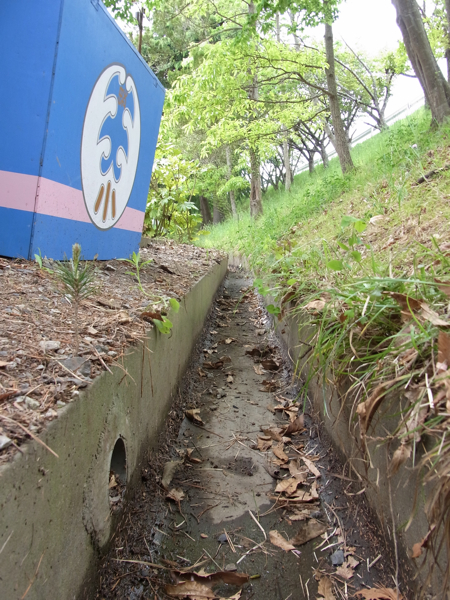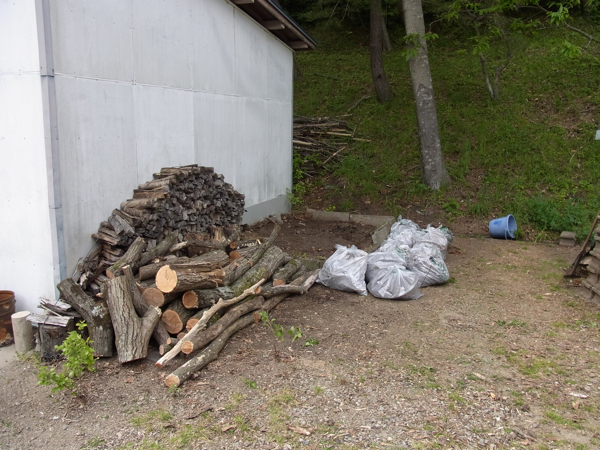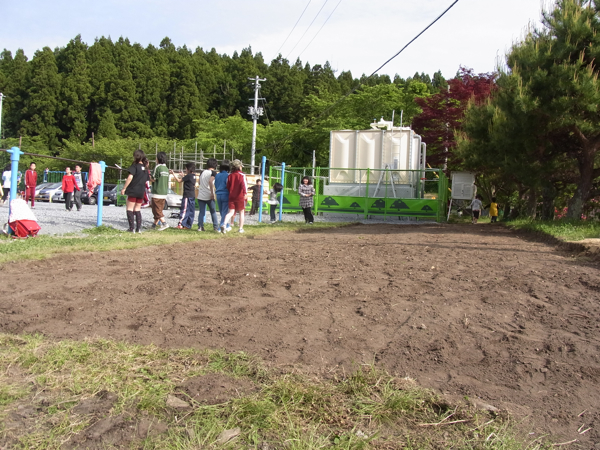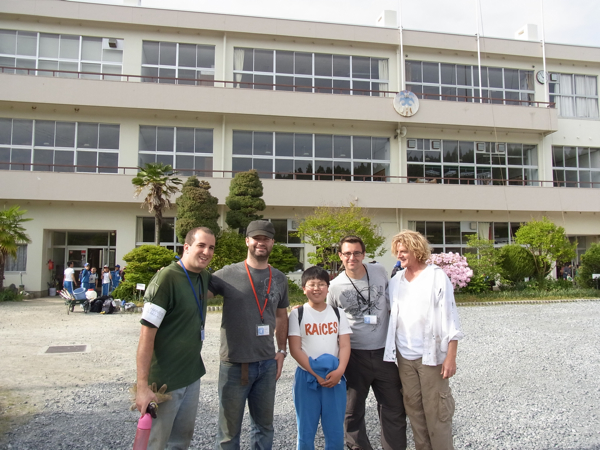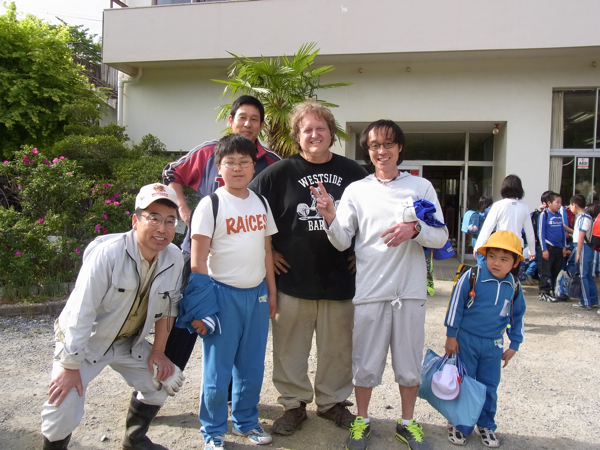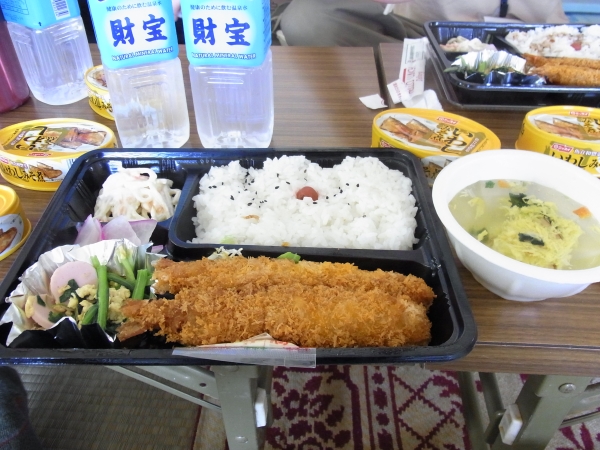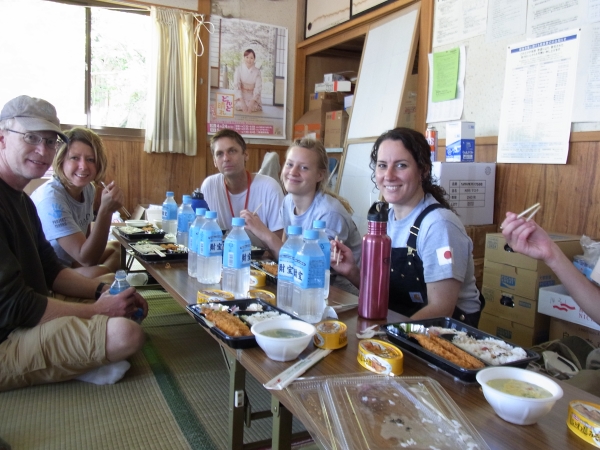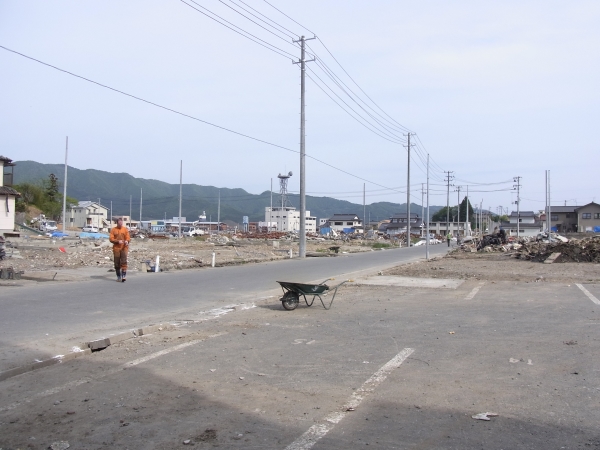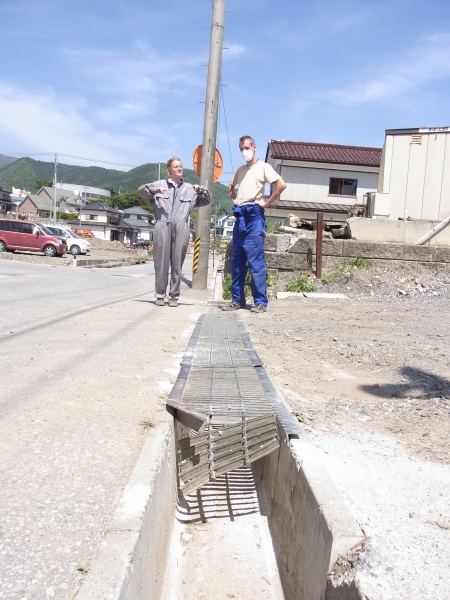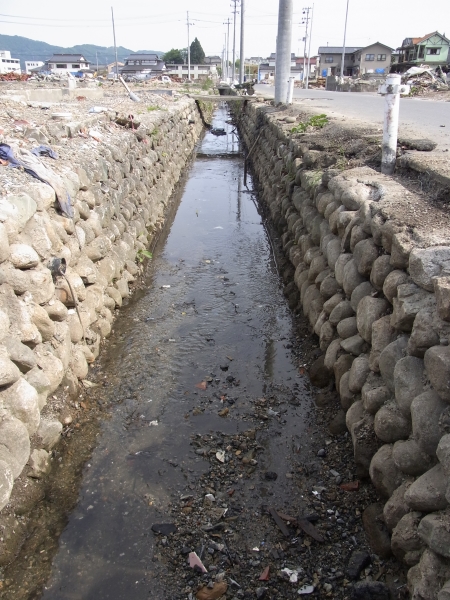Today we finally finished at the Ueno’s house. Three of us mudded the last couple of sections of the house, including the section that had previously been filled with water, and Keith took out the old septic tanks with a sledgehammer. The Uenos added a section onto the original building, and when they did, they put in a new toilet and left the old concrete septic tanks empty under the house. In the tsunami they filled with water and mud, and rather than digging out the mud, it was easier to break them up with a sledgehammer and dig out the rubble. Keith also sledged out the concrete from the in-floor kotatsu.
We were close to finishing at noon, but we would have left the place a bit of a mess, so we ended up staying all day. In the afternoon we took our time ensuring that all the nails in the frame of the house had been pounded flat and cleaning up after ourselves.
The couple came back later in the afternoon as did the carpenter who is working with them. There was a brief moment where I thought we had messed up big time. The husband gave us permission to destroy the old septic tanks earlier in the day, but the carpenter had a look of concern on his face when he saw the work. He started talking quickly with the wife and then asked me a few questions with words I couldn’t understand. The wife went to ask the husband something, and I turned to Shinpei to ask about the words and the process that the carpenter had described. Apparently in Japan when a family stops using a toilet, they have a priest purify it ritually with salt, an ofuda (shinto talismans often hung at shrines), and a blessing. This prevents any misfortune apparently. The toilet had been put out of use long before, so it was probably fine, and the couple didn’t seem too concerned.
One interesting note today was that there were more workers on the debris pile. It had been mostly flattened by the crew yesterday with the mini-crane and trucks, but there were three guys today on their hands and knees sorting through the soil, separating pieces of trash from dirt. It was dirty, thankless work – unbelievable to watch. By the end of the day they had finished approximately a third of the trash area.
A dozen of the volunteers have headed off to a satellite project in a town called Yamada, so I said some goodbyes today. There are fewer Japanese/English bilinguals around, and they’ve been sorting us into jobs before the evening meetings. Tomorrow is my last full day on Project Tohoku, and I’ll be at another gutting/mudding site with Keith. It’s just one room that needs the floors torn up and replaced within a day. Should be a fun last day.
Updates – pictures:
Two shots of the neighborhood near the Ueno’s house and store. In the first, the roof on the warehouse to the right is ripped back – this happened during the recent typhoon, not during the tsunami:
The Ueno’s store. Both entrances are temporary and were added after the tsunami:
Keith and Craig talking on the right, and on the left the Japanese workers sorting through the trash pile slowly but surely, making their way toward the store:
The temporary door for the house that I helped Vince build:
Group photo – L-R: Shinpei, Craig, Keith, the carpenter, and then Mr. and Mrs. Ueno on the first row:
The carpenter showing us his 40-year-old tools. Impressive.

